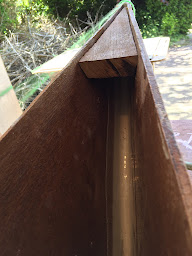At this stage I need to remove the stitches from the filleted seams. To do this I use a heat gun and a pliers.
Clipping the copper just below the twist I apply the heat gun to the wire. This heats up the wire allowing it to become loose within the fillet. I then apply light pressure with the pliers and gently tug. In most cases the copper wire slides out without any problems.
















